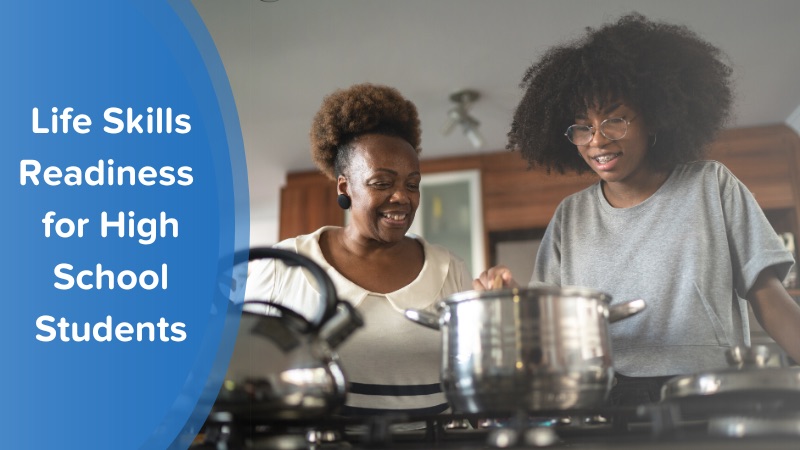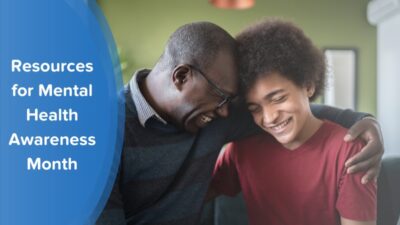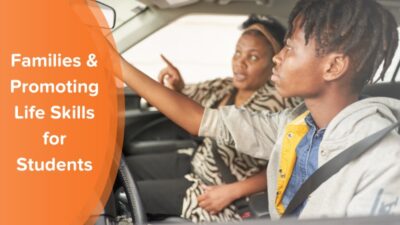By Maren Madalyn, contributing writer
My experiences as an educator were a tad unconventional. I served as a mental health counselor in Special Education classrooms and with nonpublic schools operated by a mental health nonprofit. This setup offered me the unique opportunity to work with students of all ages, at many different schools, all in need of more than just academic intervention to catch up with their grade-level peers.
I usually worked with the elementary school learners, the ones who thrived with consistent structures, boundaries, and schedules — things I excelled in upholding. But every once in a while, I’d lend a hand at another campus, often at the secondary level.
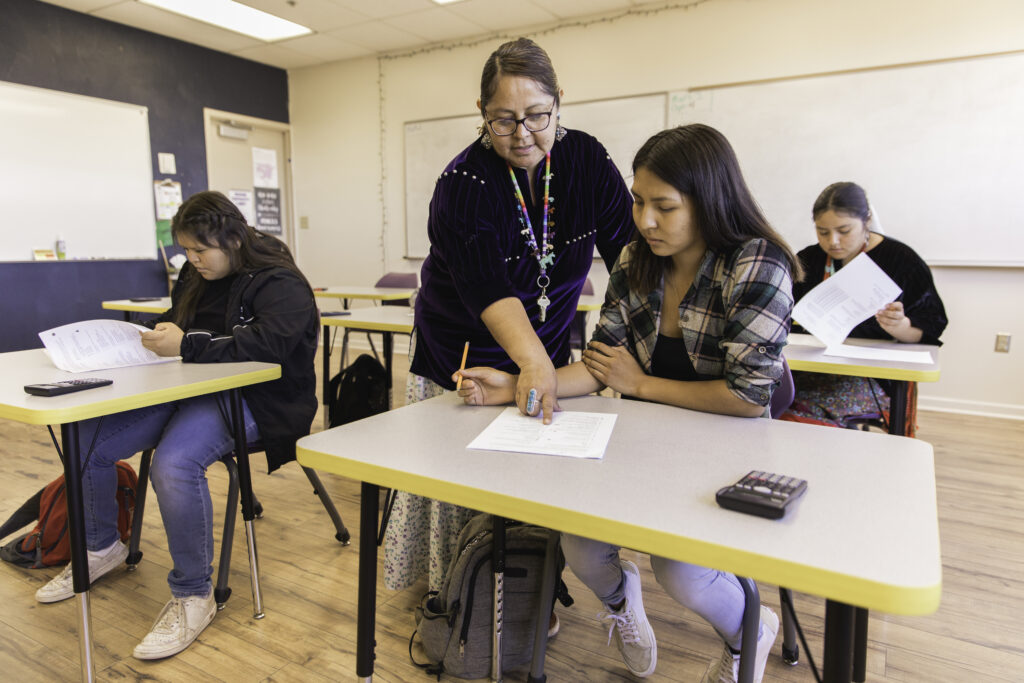
And boy, was I in for a shock on my first day supporting a nearby high school.
In short, the teens did not take kindly to my offers to help with their assignments. Some thought I might simply give them the answer to a math problem, while others shooed me, eager to find the solution on their own. I quickly learned that my instinctive approach to helping younger students — giving hands-on guidance and direct instruction — absolutely backfired with teens.
To any high school educator, this mismatch might seem obvious. But remember that I was used to kids that needed help with most basic things, like tying their shoes or spelling their own names! I was fumbling through conversations intended to guide students to their own solutions. I felt disappointed with my own social skills as I struggled to make a connection with this class. I was like a fish out of water.
Then, on day 3, the tables turned: a 10th-grade student approached me for help for the first time.
A practical life skill that supported a family in crisis
I listened as they explained their family was struggling due to an unforeseen event that had radically impacted everyday life. This student knew that their parents needed support, and the student wanted to help — but they didn’t know how.
I offered a suggestion: “What about leading a chore at home? Could you perhaps take something off your parents’ plates, like doing laundry?”
The student smiled sheepishly. “But how do I even use that thing?” they asked, pointing at a pair of laundry machines recently donated to the classroom.
I leapt on the opportunity to help this student with lessons in laundering clothes, though I still had to check my instincts telling me to get directly involved. After a few days of practice, the student reported back to me that “doing laundry helps, I guess.” A week later, I noticed a distinct shift in this student. When I asked how laundry was going, they proudly explained how they remembered to clean the lint trap and that they were getting better at reading the weird symbols on clothing tags.
Though they didn’t mention it directly, I could also tell they were proud of supporting their family in a small, but highly practical and meaningful way during this challenging time. The skill of doing laundry had little directly to do with this student’s academic knowledge, yet it was just as powerful for their learning.
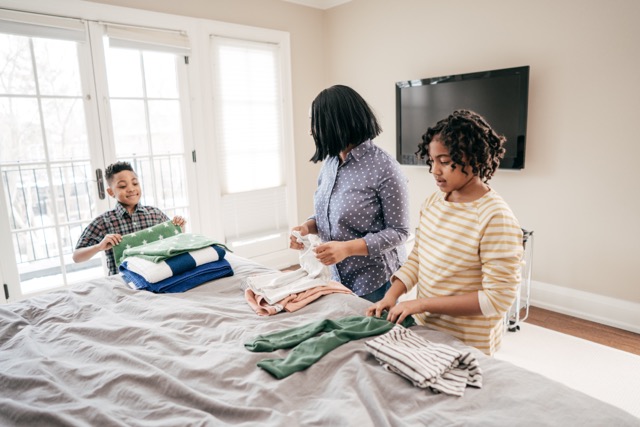
I realized then that with life skills readiness high school students are better positioned to transition into adulthood, whatever that pathway looked like for them — and educators, families, and other adults in teens’ lives could help them do just that.
4 Ways Families Can Support Life Skills Readiness High School Students Need:
What are life skills and why do they matter?
Let’s take a step back and clarify what ‘life skills’ means in the context of high school.
The term refers to the wide range of practical abilities, competencies, and behaviors needed for young people to thrive as healthy, responsible, and productive adults. Yes, this includes hands-on knowledge that supports daily living, like financial literacy and doing laundry. But it also encompasses “soft skills” that research shows correlate with college and career readiness. These include effective communication, collaboration with peers, creative thinking, and problem solving.
Life skills readiness is unique for high schoolers for two reasons:
- Teens in grades 9-12 are shifting from a classroom-focused mindset to a future-facing one. Rather than solely preparing academic skills for the next level of in-school learning, students are preparing to enter “the real world” as independent individuals. This is true for students planning to enroll in postsecondary education, too.
- When it comes to social-emotional learning (SEL), high schoolers are applying these essential skills they developed in early childhood, elementary, and middle school towards this goal of adult independence, rather than learning new skills.
There is a plethora of life skills that teens might benefit from developing during these crucial years. For more specific examples, WeAreTeachers curated a list of no less than 24 skill sets that support high school students to successfully “adult” after graduation.
The power of trusting relationships in life skills readiness
When it comes to teaching or practicing these skills, the opportunities available are endless.
For example, to help a student practice their financial know-how, a parent may help their teen help them manage a simple budget tracker for the family or have them help with comparison shopping for groceries. Teachers may cultivate high school students’ communication skills through collaborative projects or group presentations in class, as well as facilitating discussions about real-world events or topics happening in their local community.
No matter which strategy is used to cultivate these skills, the goal is to empower high school students to successfully manage various aspects of their life. That way, they’re prepared to transition into the postsecondary, whether that involves higher education or embarking on their ideal career path.

This is where families and educators play an essential role in high school students’ readiness. Research shows that when teens have positive, trusting adult relationships in their life, they experience a deeper sense of belonging and connectedness, which has positive effects on one’s mental health. These relationships may include their teachers, school counselors, and caregivers, but also extends to other family members, school staff, or mentors in the broader community.
It’s through these adult relationships that educators and caregivers can support teens to cultivate life skill readiness. If you are at all familiar with ParentPowered, you can likely guess where we are headed next!
Engaging families in life skills readiness
Research shows that family engagement is essential for teens’ success after graduation. When caregivers of a high school student are engaged in their learning in effective ways for this age group, students and schools experience a number of positive outcomes, including:
- Higher academic outcomes and improved high school completion rates (Jensen & Minke, 2017)
- Higher rates of life satisfaction, even as early as middle school (Salgado et al., 2021)
- Increased attendance rates (EdWeek)
- Decreases in risk behavior, dropout rates, and truancy (DeSpain et al., 2018)
You can easily see why families become all the more crucial to engage in order for schools to unlock these benefits of family engagement at the secondary level! Teens can better flourish when they have a community of supportive adults around them, ready to help guide their path toward independent thriving and life skill readiness.
Barriers to family engagement at the secondary level
Though families continue to play a pivotal role in high school, there is an understandable misperception that teens don’t want their caregivers involved. After all, students are steadily building their independence. It can also feel challenging for families to recognize when opportunities arise to give their input, or understand the ways to best contribute to their students’ learning during these later years. This may lead some caregivers to wonder if family engagement even exists at the high school level.
On the educator’s side, it may feel overwhelming to imagine cultivating relationships with families when picturing the sheer volume of students on a teacher’s roster or school counselor’s caseload. For context, school counselors in the United States have an average caseload of over 400 students. It’s a monumental feat for educators with such high ratios to provide every student with the same level of support, attention, and guidance on their life skill development, even with support from teachers and other staff members.
Fortunately, there are several ways that caregivers, educators, and the larger community can come together to cultivate the life skills readiness high school students need to thrive.
4 creative ways to cultivate teens’ life skills
ParentPowered is embarking on an exciting journey: by the 2024-2025 school year, we will expand our family engagement curriculum to support students all the way through grade 12. Through our digital programs, we promote strategies, reflective practices and parent-child interactions that:
- Promote self regulation
- Build students’ ability to evaluate and share their feelings
- Support teens to make responsible decisions
- Establish a trusting bond with a parent that serves as a protective factor buffering teens against trauma and even everyday stressors
And that’s just on the life skills side of things!
Developing a comprehensive family engagement curriculum for high school involved extensive research — including a review of empirical literature, a crosswalk of college and career readiness frameworks, and listening sessions with high school educators, families, and students. The “Life Skills and Well-Being” domain is just one of the five total we uncovered in our investigation.
From this research, as well as our team’s years of combined experience in family engagement, we put together four creative ways to help families and educators together shift from being captains to copilots in service of teen life skill building — no matter which ones they’re cultivating!
1. Bolster family active listening skills
Active listening refers to a set of skills that help someone both listen and communicate more effectively with others. For families raising teenagers, it is perhaps the most critical skill set they can develop.
Why? Because active listening is all about cultivating trust in a relationship — and research indicates that the quality of parent-teen relationships can impact life skills such as self esteem and self efficacy.
Leveraging active listening also marks a shift in a caregiver’s support of student learning, moving away from direct support in favor of indirect support. By listening in a fully engaged way to their teen, a caregiver gives space for their student’s independence to grow, following their lead while providing guidance they want and need.
Download this guide to share with your adolescents’ caregivers, all about practicing the art of listening as early as middle school.
2. Model using life skills in healthy ways
Similar in theme to active listening, modeling offers parents and educators another way to help their high school students practice their life skills. In fact, research shows that high school students prefer strategies like this from adults in their life, which support their autonomy in learning (Xu, 2002). On top of this, caregivers can often model things like time management, self care, cooking, and much more as part of daily life, too.
Take stress management, for instance — an essential life skill that benefits every person. When a caregiver is frustrated, and they use one of their own self care skills to calm themselves in front of their teen, they’re demonstrating a healthy way to self-manage stress. Modeling parent self care among other life skills can encourage students to practice using their own self care practices, deepening the connection between SEL and mental health.
3. Keep building your own life skills, too
Whether you’re seventeen or seventy, you too can be a lifelong learner — which means adults can also continue building and refining their own life skills, just like teens.
Using family engagement strategies, educators can support families with continually honing their life skills. Hosting workshops (both virtually and in person) on topics of interest, socializing community resources, and facilitating parent groups to share their expertise are all wonderful ways for educators to create space to nurture adult life skills in service of students. As a bonus, parents’ efforts to continue their learning serves as a great model for their teens to do the same as they enter adulthood.
Another opportunity involves flipping the script and letting students take the lead in teaching caregivers about life skills. Nothing helps a teen understand how well they know a skill or subject than teaching it to someone else!
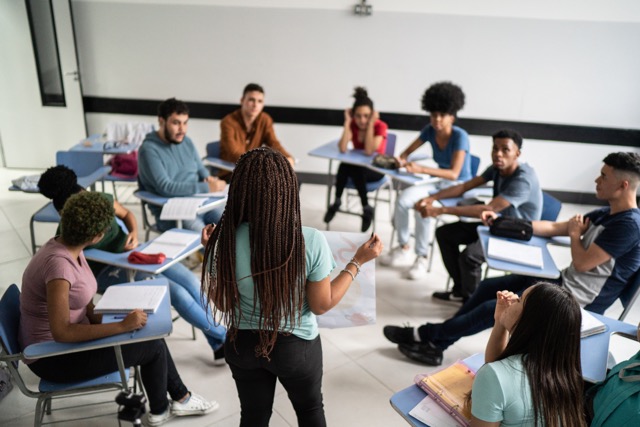
Families and educators both can shift into learner-mode by asking their teen to share something new with them. Offering thoughtful questions and engaging active listening skills help adults to serve again as a copilot rather than a captain as they watch their teens practice skills like critical thinking or problem solving — skills that they’ll continue to evolve throughout their entire life.
4. Tap into the broader community
School staff and caregivers aren’t the only ones who can nurture life skills readiness. Collaborating with local businesses and community members that have real-world expertise and knowledge can be powerful in helping teens connect the dots between their personal goals or needs, and the necessary skills to achieve them. This is especially helpful when it comes to career planning for high school students.
Let’s take one category from the “Life Skills and Well-Being” domain in our high school framework: financial literacy.
To help teens build their financial savviness, high school educators may invite local financial advisors or accountants to lead a budgeting workshop that guides teens with building their own forecast of spending on basic necessities like food and housing. A caregiver in the school community might mentor a small group of students curious to explore careers in finance, sharing insights from their own experiences through informal gatherings both on campus and out in the community.
The possibilities for community partnership in high school are vast and varied, ranging from opportunities for teen community service or designing entire programs in partnership with organizations. What’s essential is that educators identify the strategies that work best for their families and student community, rather than adopt a one-size-fits-all approach.
Life skills readiness high school students love — the ParentPowered way
Though my time in that high school classroom was short, I was thankful for the lessons I learned both in how to adapt my engagement strategies to different age groups and also for visibility into the crucial role that life skills play in a high schooler’s future. It underscores the importance of effective family engagement strategies adapted to meet the unique needs of adolescents and their caregivers. In that way, educators can surround every student with a team of adults ready to help them help themselves as soon-to-be adults in the real world.
ParentPowered is the partner for educators serving students of all ages. Why? Because our programs grow up alongside each kid — from birth through high school. Join us at an upcoming info session to learn more about how ParentPowered is leading educators on the path toward high impact, low lift family engagement that helps all students thrive.
About the author
Maren Madalyn has worked at the intersection of K12 education and technology for over a decade, serving in roles ranging from counseling to customer success to product management. She blends this expertise with fluid writing and strategic problem-solving to help education organizations create thoughtful long-form content that empowers educators.

